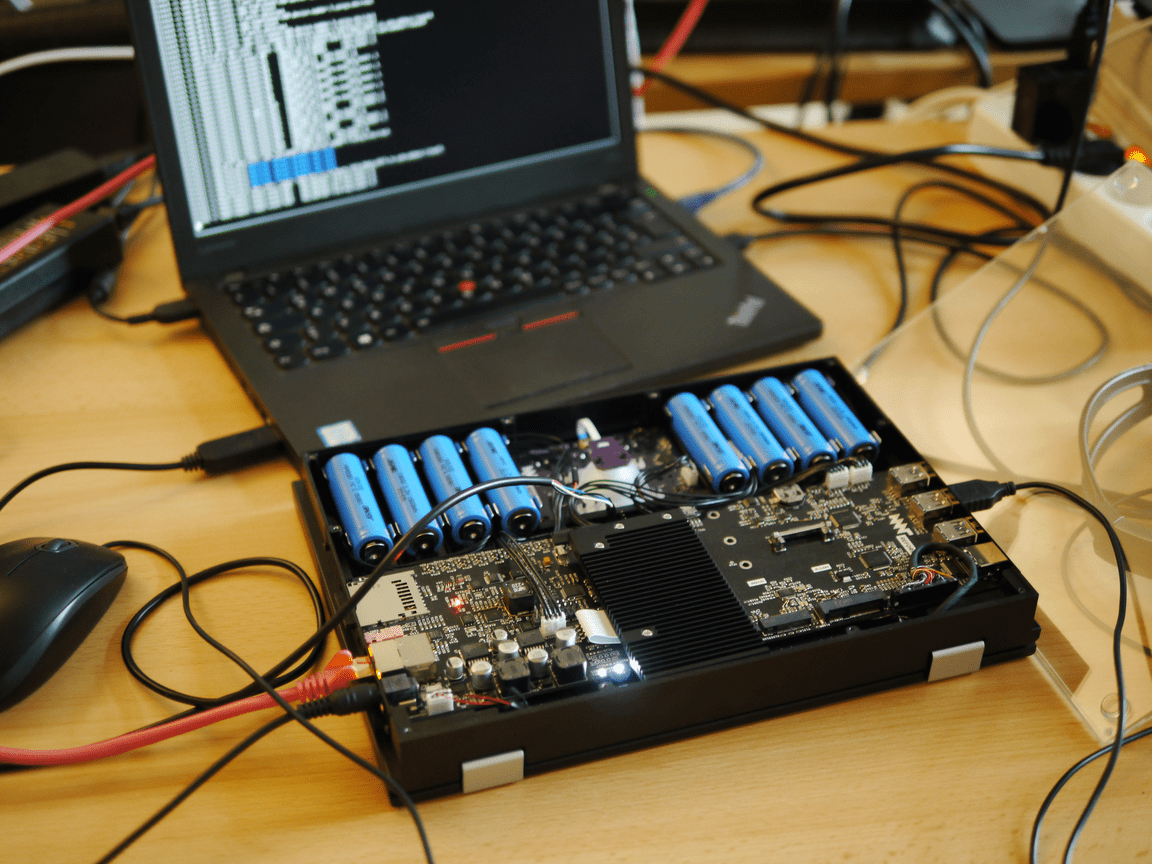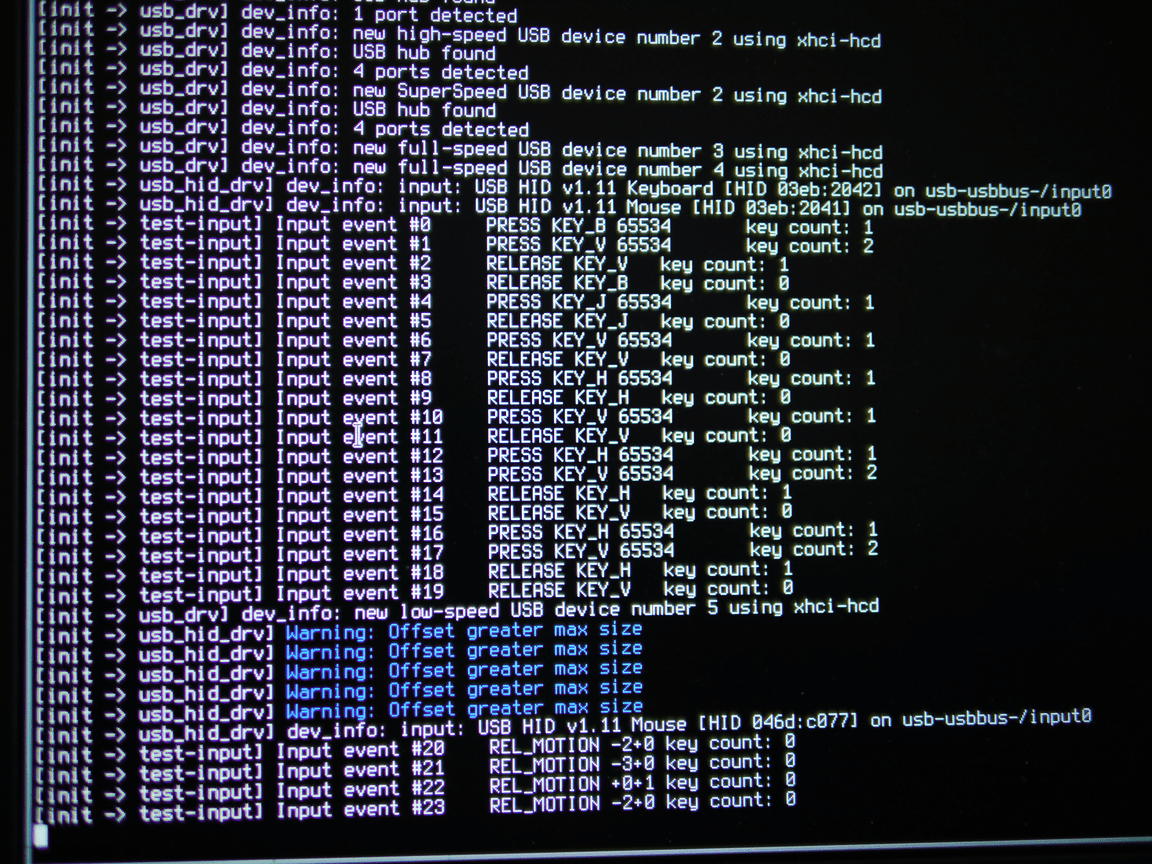MNT Reform 2 - First Steps
Recently, I was honored for receiving the first beta MNT Reform 2.0 shipped by MNT Research GmbH. This is an interesting laptop project produced by a team of three people: Lukas Hartmann (electronics / software design), Ana Beatriz Albertini Dantas (product / industrial design), and Greta Melnik (sleeve design / SMD assembly).
The curiosity about it is that such a small team has designed a customizable, completely-open, robust-and-sustainable, and last but not least fancy device for privacy-aware and hacker-minded people. It contains a self-designed motherboard accomodating a Nitrogen8M System-on-Module with an i.MX8MQ System-on-Chip inside, its own mechanical keyboard, as well as either a trackball or trackpad. Everything inside is open hardware. You can download all PCB schematics. Moreover, the MNT Reform arrived in a box containing colored printings of the schematics as well. If you are interested you can enjoy a series of unboxing pictures.
The only limitation regarding the openness is naturally the Integrated-Circuits including the SoC. But here the technical lead Lukas Hartmann has chosen to use the NXP's i.MX8MQ as a good choice regarding open documentation, unlocked boot-chain and most absence of firmware blobs. Due to this choice I got aware of this highly interesting project. For the very same reasons, we made use of the i.MX SoC series at Genode Labs in the past. And after looking deeper at MNT Reform, it became obvious to me that we share a common mindset at MNT Research and Genode Labs: giving back control to the users.
To cut a long story short: I was really excited when the MNT Reform arrived. And all my expectations were surpassed when opening the package. First of all, the transparent, professional communication policy by MNT Research GmbH is a pleasure. The box not only included the laptop and schematics, but a detailed letter with all starting information and further references. It felt like doing a time travel. When my father handed his old (1980) HiFi system to me, it included a thick handbook with all schematics back then as well. Devices as such are constructed to survive decades.
Obviously planned for the near future is the Reform Operator's Handbook. But for the time-being I was lucky to scroll and click through the interactive system diagram with links to the relevant Linux drivers and datasheets. I've already experienced how frustrating it can be to figure out what innards boards and SoCs might contain during the last years. The MNT Reform 2 is a nice contrast here.
First I failed to turn-on the device, but after reading the annexed letter more carefully, I realized that it's simply the Circle-key in combination with 1 or 0 to turn the device on and off. Actually quite plausible. It is easy to recap that interactions with the system controller's firmware are always done via the Circle key, whereas the MNT Reform key is used to interact with the OS (or better the window-manager). When playing a bit with the Linux distro preinstalled on the SD-card, I really enjoyed to use the keyboard! The trackball is still a bit harsh when used, but I assume it will run more smoothly when enwrapped with my hands patina.
But being a Genodian my goal was not only to consume the device as it is, but making it my primary Genode platform. So it was time to unscrew the acrylic glass bottom side, and connect a serial to USB converter in between the serial pins of the Reform and my current development machine.

|
By interacting with the pre-installed u-boot, I could successfully load a first very simple "Hello World" alike Genode system image into the Reform's memory via network. Therefore, I simply used an image built originally for the i.MX 8MQ Evaluation Kit, which uses the very same SoC. Typically, at Genode Labs we use the uImage format and u-boot's bootm command to load our system images. The first attempt to boot that image failed, because the preinstalled u-boot insisted on a device-tree blob to be provided as well. But then it successfully booted and showed Genode's hw kernel/core, init and test-log component running on the Reform.
The next step was changing the frequency of the CPUs when starting the kernel. When booted, the CPU runs with 1 GHz frequency, but it is actually capable to run with 1.5 GHz. I first figured out how to do this with the i.MX 8MQ EVK, because it is already integrated well into our testing infrastructure. It took quite some time to figure out how the actual protocol of bit-twiddling in the PLLs looks like, but finally it run reasonable faster, and I could one-by-one adapt the changes to the MNT Reform.
The first midterm goal is to run an interactive Sculpt OS on the Reform, similar to the one already presented on the i.MX 8MQ EVK at FOSDEM earlier this year. Therefore, a bunch of drivers for networking, persistence storage, and human interaction are needed in the first place. The hope was that most drivers used already with the i.MX 8MQ EVK could be used unmodified to achieve this. Indeed, the drivers for SD-Card and Ethernet went out-of-the box. The USB host controller driver was functional too. But in contrast to the EVK, which uses only one USB host controller of the i.MX 8MQ SoC, the Reform 2 uses both available ones. An USB hub connected to the second one attaches the trackball and keyboard USB HID devices. After tweaking the driver a bit, which still uses hard-coded I/O resources instead of the new platform driver for ARM, I could successfully see input events from trackball, keyboard, and an attached mouse, as you can see in the below picture.

|
The last missing point is the display panel. There is already a Linux driver port for the Display Controller Subsystem (DCSS) - the display engine of the SoC - available in Genode. However, until now we only used and enabled the HDMI connectivity for it. But the display panel of the Reform is connected via a Mobile Industry Processor Interface (MIPI) Display Serial Interface (DSI). So it won't work without additional device driver integration. Fortunately, my colleague Sebastian Sumpf already begun to port the missing MIPI-DSI piece to run an OLED diplay connected to the EVK board. As soon as he finished his work, I'll gladly integrate it into my MNT Reform 2 topic branch. Then a first Sculpt OS version should be available.
The next bigger issue I currently focus on is writing an i.MX 8MQ specific platform driver comprising clock & power management and to turn the drivers into using it. Moreover, it shall manage the PCI-x bus available, which is quite important to enable NVMe, or Wifi on the MNT Reform 2.


 Stefan Kalkowski
Stefan Kalkowski